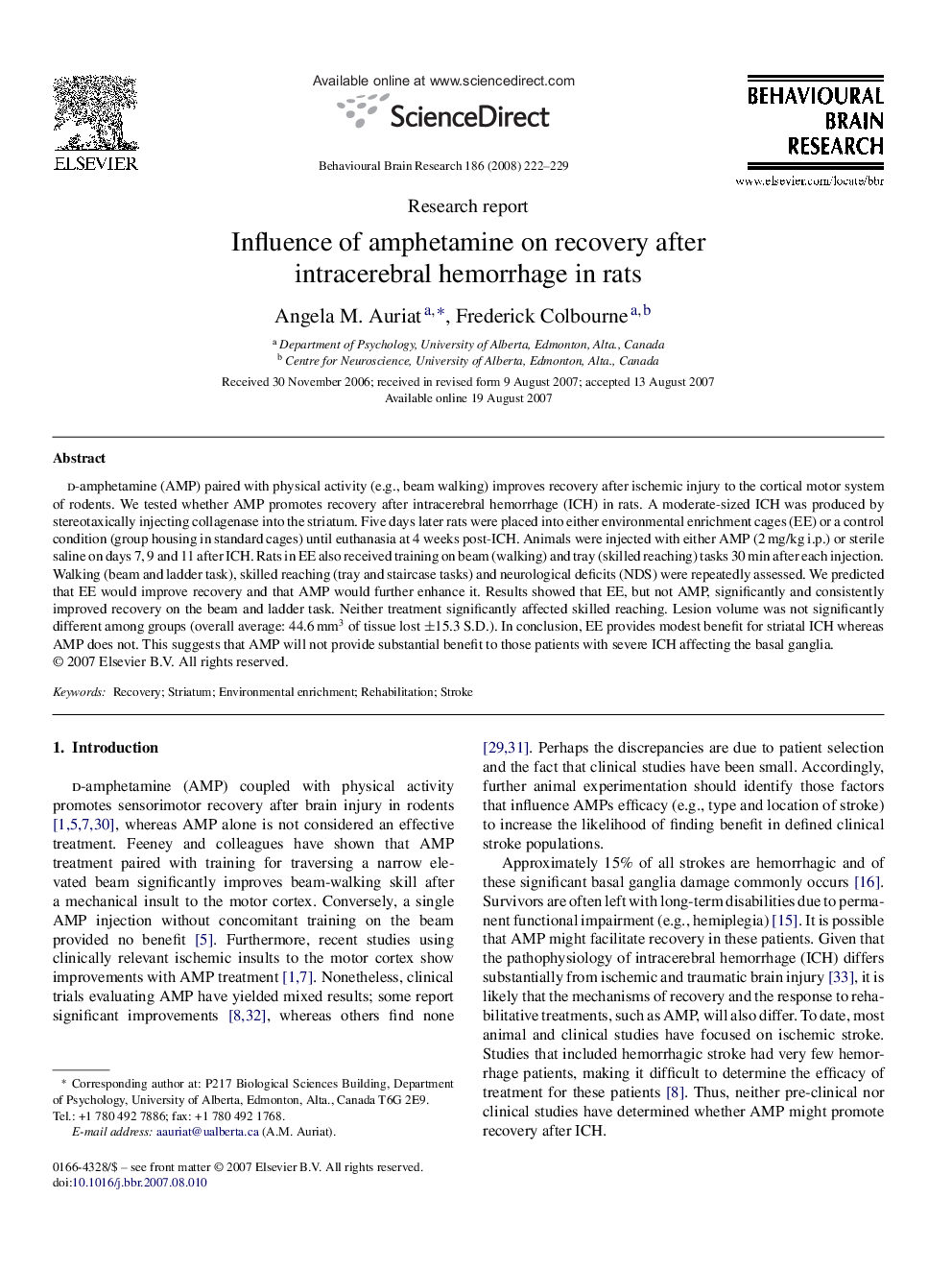| Article ID | Journal | Published Year | Pages | File Type |
|---|---|---|---|---|
| 4315463 | Behavioural Brain Research | 2008 | 8 Pages |
d-amphetamine (AMP) paired with physical activity (e.g., beam walking) improves recovery after ischemic injury to the cortical motor system of rodents. We tested whether AMP promotes recovery after intracerebral hemorrhage (ICH) in rats. A moderate-sized ICH was produced by stereotaxically injecting collagenase into the striatum. Five days later rats were placed into either environmental enrichment cages (EE) or a control condition (group housing in standard cages) until euthanasia at 4 weeks post-ICH. Animals were injected with either AMP (2 mg/kg i.p.) or sterile saline on days 7, 9 and 11 after ICH. Rats in EE also received training on beam (walking) and tray (skilled reaching) tasks 30 min after each injection. Walking (beam and ladder task), skilled reaching (tray and staircase tasks) and neurological deficits (NDS) were repeatedly assessed. We predicted that EE would improve recovery and that AMP would further enhance it. Results showed that EE, but not AMP, significantly and consistently improved recovery on the beam and ladder task. Neither treatment significantly affected skilled reaching. Lesion volume was not significantly different among groups (overall average: 44.6 mm3 of tissue lost ±15.3 S.D.). In conclusion, EE provides modest benefit for striatal ICH whereas AMP does not. This suggests that AMP will not provide substantial benefit to those patients with severe ICH affecting the basal ganglia.
